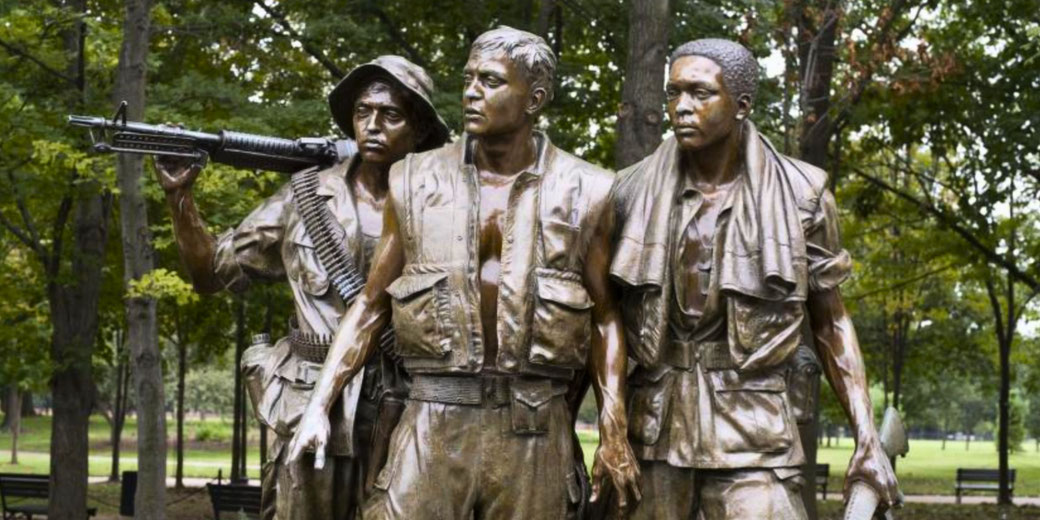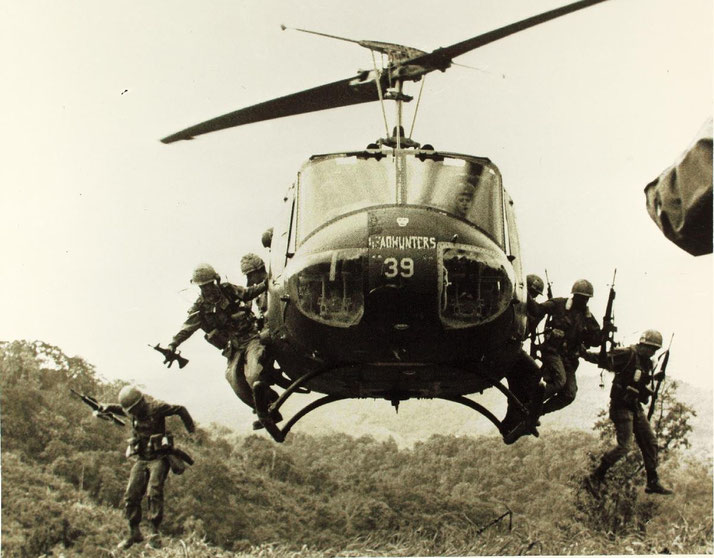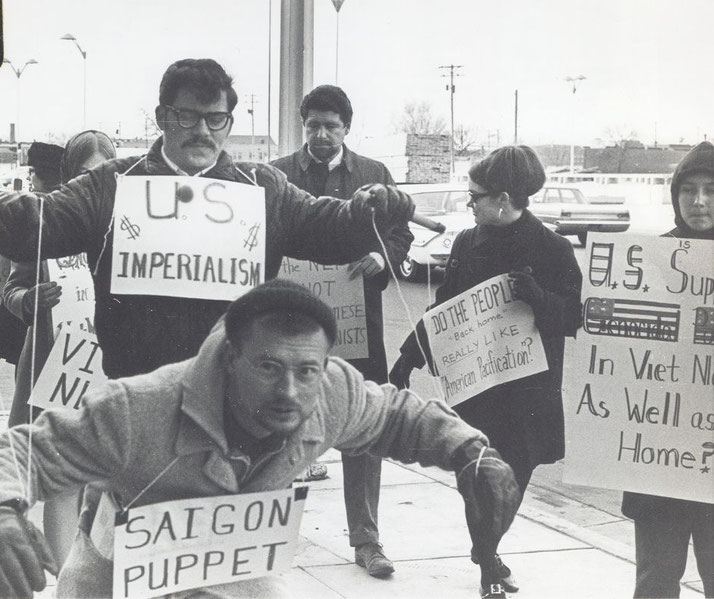Why the Vietnam War was an American disaster

The most famous and deadly conflicts from the Cold War took place in the south-east Asian country of Vietnam. From the mid-1950s until 1975, Vietnam experienced a protracted conflict between the communist forces in the North and the non-communist South, which were supported by the United States.
This war would end in a catastrophic failure for America, which significantly impacted its reputation, both internationally and among its own citizens.
Here is how it happened...
The troubled modern history of Vietnam
For most of Vietnam's history, it had been ruled by a succession of royal dynasties.
The most powerful of these was the Lý dynasty, which began in AD 1009 and was followed by the Trần and Lê dynasties.
By the 15th century, the Lê dynasty had established a sophisticated centralized administration and successfully expanded its territory through military conquests.
However, by the mid-19th century, internal divisions and declining royal authority had weakened the country, which would make it susceptible to foreign intervention.
Subsequently, the Nguyễn dynasty, which started in 1802 under Emperor Gia Long, would be the last dynasty of Vietnam.
It struggled with internal dissent and the pressures of modernization while trying to maintain independence.
It was the French who would launch an invasion of Vietnam in 1858.
Their superior technology and armed forces led to two treaties in 1862 and 1874, which formally handed parts of southern Vietnam to France, which the French called Cochinchina.
Following this initial conquest, France gradually expanded its control over the entire region and consolidated its hold through military campaigns and further treaties unfairly imposed on the Vietnamese monarchy.
By the early 1880s, France had secured control over the northern and central parts of Vietnam: areas known as Tonkin and Annam, respectively.
In 1887, with the establishment of the Indochinese Union, Vietnam, along with Cambodia and later Laos, became part of French Indochina.
Throughout their rule, the French exploited Vietnam’s resources. They also introduced French administrative systems and economic policies, which disrupted traditional Vietnamese ways of life.
Moreover, any resistance to French rule by the Vietnamese people was met with harsh repression.
However, it did not stop a number of uprisings and rebellions throughout the colonial period.
Then, when Japan invaded Vietnam during World War II, the French were temporarily removed from power.
If the Vietnamese hoped that Japan would help them gain independence, they were wrong.
The Japanese treated them just as poorly as the French had done. As a result, a Vietnamese resistance leader called Ho Chi Minh founded a guerrilla force called the Viet Minh in 1941 in order to fight for independence.
Ho Chi Minh was a committed communist, which he had learnt about during his travels through France in 1921.
When Japan was eventually defeated by the Allied powers in September 1945, there were rumours that the French might return.
So, Ho Chi Minh declared Vietnam's independence on September 2, 1945, but he didn't really have a way of enforcing this, as his forces were still very small.
However, France quickly reasserted control over the country and resumed their colonial rule.
Initially, the United States supported France's efforts to maintain control over Vietnam, especially because Ho Chi Minh's communist forces were a threat to democratic power.
In 1950, the United States began providing military aid to the French forces in the area.
How France was defeated at the Battle of Dien Bien Phu
The growing conflict between the French Union's colonial Far East Expeditionary Corps and the Viet Minh communist-nationalist revolutionaries led to the First Indochina War.
The most influential battle of the war occurred between March 13 and May 7, 1954 in the Dien Bien Phu valley in northwestern Vietnam.
The French forces were trying to stop the Viet Minh from advancing into Laos.
To achieve this, the French command under General Henri Navarre set up a defensive complex at Dien Bien Phu, as they believed its remote location and fortifications would make it difficult for the Viet Minh to attack effectively.
However, the plan backfired dramatically as the Viet Minh, led by General Vo Nguyen Giap, dragged artillery over mountains and set up positions that could shell the French from higher ground.
They ultimately encircled and besieged the French, which cut off all French supply lines.
So, the French garrison, isolated and unable to receive reinforcements, faced dwindling supplies and morale.
After fifty-five days of fighting, the Viet Minh launched a massive final assault on May 7, and overran the remaining French defenses.
The defeat at Dien Bien Phu shocked the French public and America, who had supported them.
The loss at Dien Bien Phu led to the Geneva Conference, where the cease-fire agreement was signed in July 1954.
This effectively ended French colonial rule in Indochina and led to the partition of Vietnam into North and South at the 17th parallel.
The battle boosted the global reputation of the Viet Minh and their leader, Ho Chi Minh, but terrified the Americans who believed that this was the clearest sign that communism was about the spread across the world.
Why the US became more involved in Vietnam
The newly divided Vietnam faced growing anger on both sides of the divide. Both parties wanted a reunited country, either under communism or democracy.
The United States openly backed democratic South Vietnam, while North Vietnam received support from the communist countries of China and the Soviet Union.
Ngo Dinh Diem, the US-backed President of South Vietnam from 1955 called for more direct US involvement to help defend his regime from growing communist threats.
As a result, the United States began dispatching military advisors to South Vietnam in 1955 to help train the South Vietnamese army.
The formation of the Viet Cong
In 1960, the National Liberation Front (NLF), also known as the 'Viet Cong', was formed.
This was a communist-led guerrilla force and political organization in South Vietnam that fought against the South Vietnamese and American forces.
The Viet Cong aimed to overthrow the government of South Vietnam and reunite the country under communist rule, aligned with North Vietnam.
Its members were drawn from various backgrounds, including peasants, workers, intellectuals, and defectors from the South Vietnamese army.
The Viet Cong operated from rural bases, relying on the support of the local population.
How the Vietnam War began
Then, on August 2 and 4, 1964, in the Gulf of Tonkin, two US ships were reportedly attacked by North Vietnamese forces.
Even at the time, the details about the event were not clear, and it was suspected that these events may be used as a reason to justify a great military intervention by America.
In particular, the second attack, on August 4, is widely considered by many historians to have been exaggerated in the subsequent Gulf of Tonkin Resolution.
As predicted, there was a rapid escalation of US ground troops in Vietnam, with the first official deployment in March 1965.
In addition, in early 1965, US President Lyndon Johnson officially approved Operation Rolling Thunder: a campaign of sustained aerial bombing airstrikes against North Vietnam.
Operation Rolling Thunder lasted for over two years and caused significant damage to North Vietnamese infrastructure.
Yet, the North Vietnamese Army and the Viet Cong continued to pose a formidable challenge and conducted substantial operations throughout South Vietnam.

The critical moment of the Tet Offensive
By 1967, American troops were struggling to hunt out and defeat the North Vietnamese in a traditional pitched battle.
Instead, they chose to remain a guerilla force that attacked the Americans from the dense jungle.
The exact size and strength of the communist forces were still not known by the US military.
That is why, when a massive series of surprise attacks by the Viet Cong broke out, the South Vietnamese and US forces were caught off guard.
This large offensive commenced on January 30, 1968, which was the Vietnamese New Year (Tet), and became known as the Tet Offensive.
Even though the Americans eventually forced the Viet Cong back, the US army suffered huge casualty numbers.
Why the American public turned against the war
In reality, the Tet Offensive was a military failure, but it became a turning point in the war because it made many members of the American public realize the massive cost of the war in Vietnam.
As a result, many Americans turned against their own government and supported the anti-war movement in the United States.
Protestors called for more transparency from officials about what was really going on in Vietnam.
At this time, one of the most infamous events of the war came to light. Known as the My Lai Massacre, it was revealed that there had been a mass killing of Vietnamese civilians by US troops on March 16, 1968, in the village of My Lai, in South Vietnam.
The number was staggering. US troops killed over 500 unarmed civilians, including women and children.
It was claimed that the brutal killing was fueled by soldier frustrations with their inability to find and destroy the Viet Cong.
So, they took their anger out on defenceless people in Vietnam. When the full story was shared with the public, it intensified opposition to the war in the United States.
As a result, there were major protests and demonstrations, calling for the US to withdraw from Vietnam.

The end of the war and the Fall of Saigon
With mounting public pressure, and a seemingly impossible chance of achieving victory in Vietnam, the United States began withdrawing its troops in 1969.
This was a gradual process and they still provided military aid to South Vietnam.
The new American president, Richard Nixon, introduced the Vietnamization policy in 1969.
In it, he said that it was America's aim to increase the combat role of South Vietnamese troops themselves, which would allow American forces to return home.
However, as US troops slowly departed, the Viet Cong only grew stronger. So, in 1972, in response to another massive North Vietnamese offensive, the US initiated Operation Linebacker.
This was the largest bombing campaign over North Vietnam since Operation Rolling Thunder, and aimed at cutting off supplies to the North.
Then, in January 1973, the United States and North Vietnam finally signed the Paris Peace Accords.
This was a ceasefire that formally saw the final withdrawal of US troops from Vietnam.
Even though America had left, fighting between North and South Vietnam persisted.
The war finally came to an end on April 30, 1975, when North Vietnamese troops entered Saigon, the capital of South Vietnam.
The last remaining United States troops in the city used their helicopters and vehicles to evacuate some South Vietnamese citizens and US personnel from the city before it fell.
With the fall of the capital city, it was renamed Ho Chi Minh City, and Vietnam was unified under Communist rule.
Many South Vietnamese individuals who had fought for democracy were sent to re-education camps, and forced to study Communist ideology.
The end of the war also led to significant displacement of people within Vietnam as economic troubles saw an increase in poverty.
An estimated 10 million Vietnamese civilians became refugees who fled to other countries to find safety and a better life.
Aftermath of the war
The Vietnam war was a devestating conflict. In Vietnam itself, it's estimated that between one and three million people were killed, including civilians, soldiers, and members of the Viet Cong and North Vietnamese Army.
However, these numbers remain disputed due to the complexities of war casualty recording.
In the United States, over 58,000 troops were killed. But there was also a significant economic burden.
Accounting for inflation, some estimates suggest that the war cost the United States over $1 trillion.
What do you need help with?
Download ready-to-use digital learning resources
Copyright © History Skills 2014-2025.
Contact via email
With the exception of links to external sites, some historical sources and extracts from specific publications, all content on this website is copyrighted by History Skills. This content may not be copied, republished or redistributed without written permission from the website creator. Please use the Contact page to obtain relevant permission.





